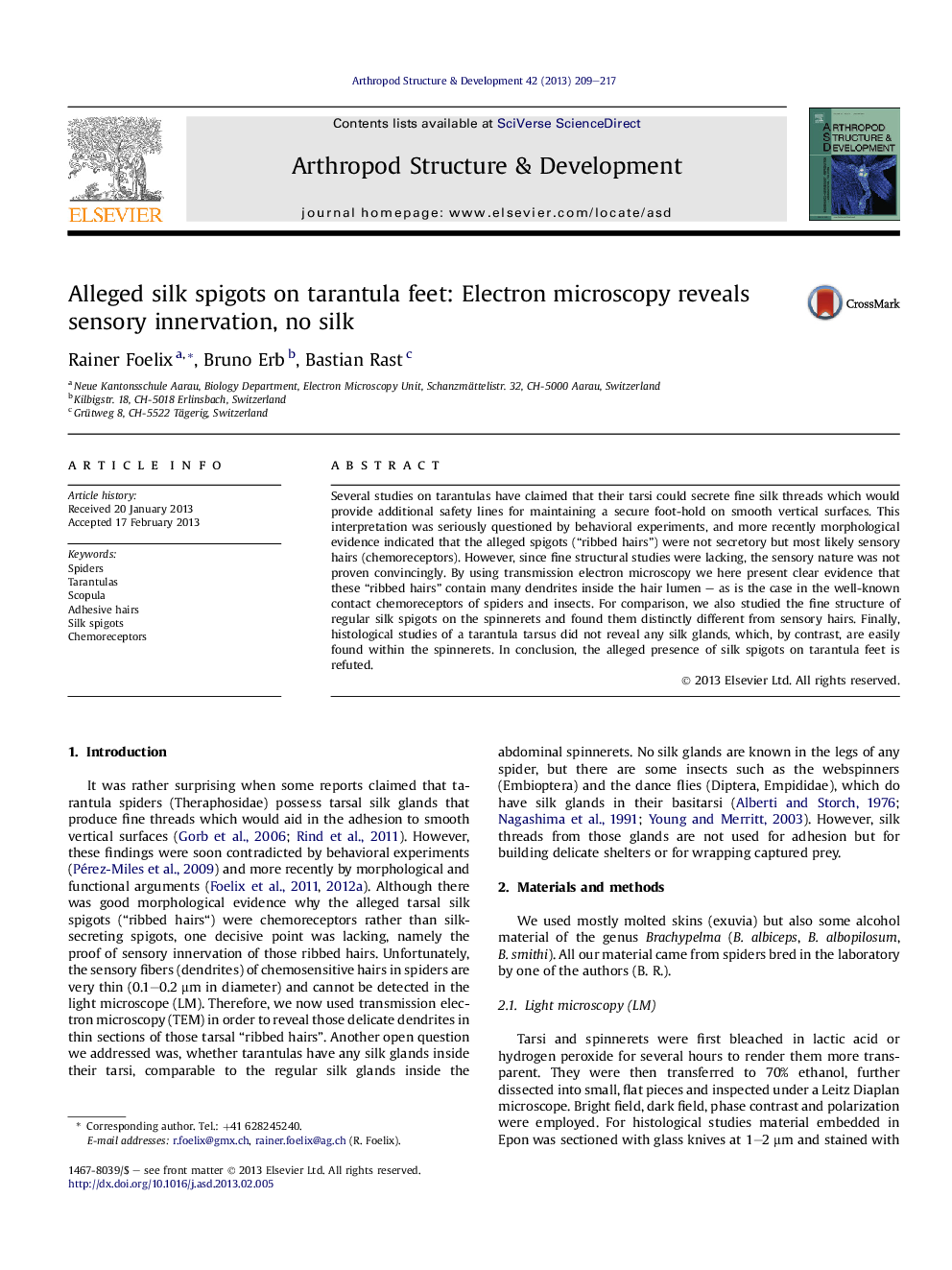| Article ID | Journal | Published Year | Pages | File Type |
|---|---|---|---|---|
| 2778746 | Arthropod Structure & Development | 2013 | 9 Pages |
Several studies on tarantulas have claimed that their tarsi could secrete fine silk threads which would provide additional safety lines for maintaining a secure foot-hold on smooth vertical surfaces. This interpretation was seriously questioned by behavioral experiments, and more recently morphological evidence indicated that the alleged spigots (“ribbed hairs”) were not secretory but most likely sensory hairs (chemoreceptors). However, since fine structural studies were lacking, the sensory nature was not proven convincingly. By using transmission electron microscopy we here present clear evidence that these “ribbed hairs” contain many dendrites inside the hair lumen – as is the case in the well-known contact chemoreceptors of spiders and insects. For comparison, we also studied the fine structure of regular silk spigots on the spinnerets and found them distinctly different from sensory hairs. Finally, histological studies of a tarantula tarsus did not reveal any silk glands, which, by contrast, are easily found within the spinnerets. In conclusion, the alleged presence of silk spigots on tarantula feet is refuted.
Graphical abstractFigure optionsDownload full-size imageDownload as PowerPoint slideHighlights► The alleged tarsal silk production in tarantula feet is challenged by electron microscopy. ► The alleged spigots have the same morphology as chemosensitive hairs in spiders. ► High magnification revealed sensory nerve fibers in these hairs, but no silk. ► Chemoreceptors and silk spigots are structurally different. ► Silk glands are lacking in histological sections of tarantula feet.
